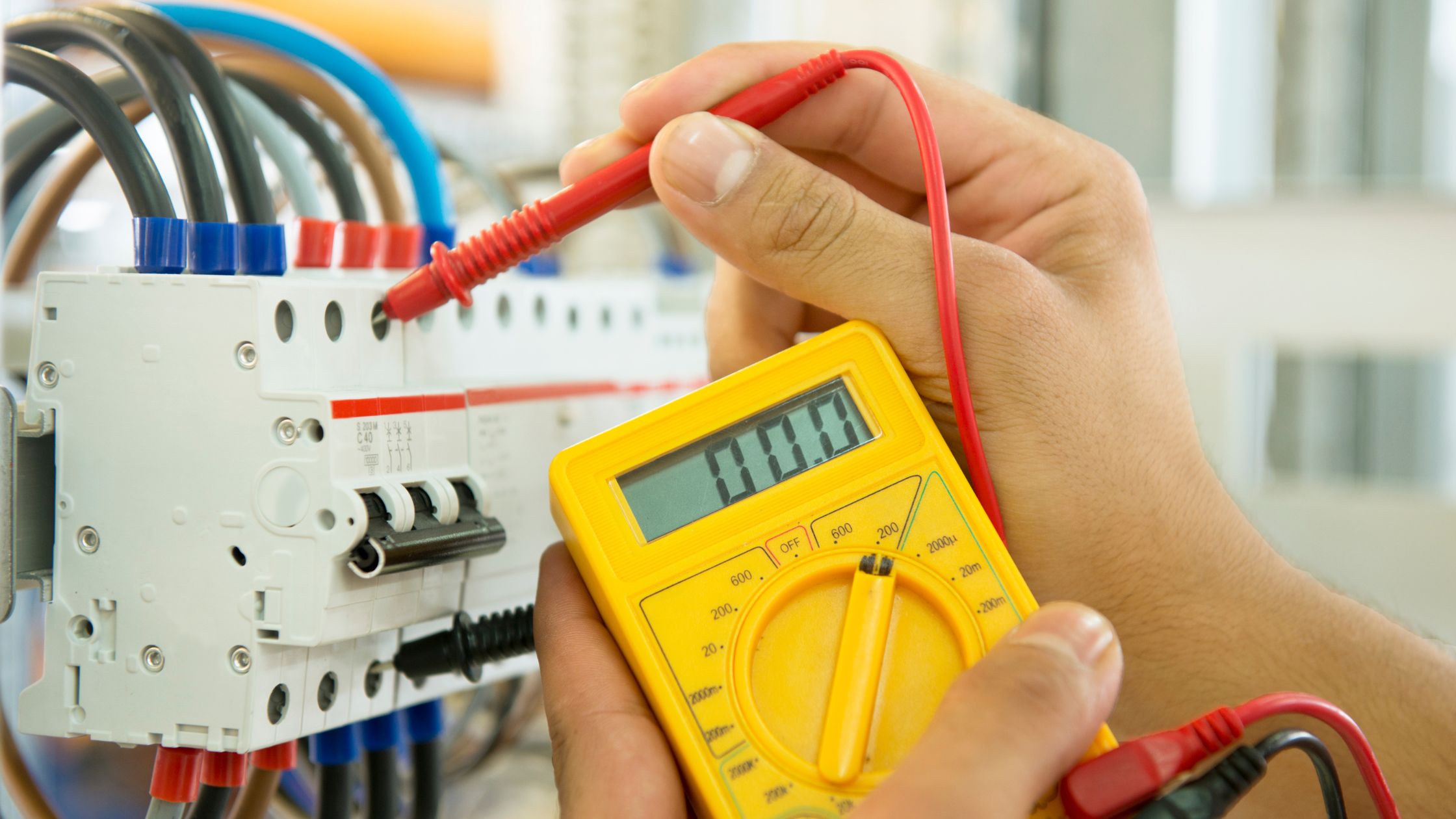
It's important to have a general understanding of how your home's electrical system works so that you'll know what to do in an electrical emergency. It's also an essential foundation to build on as you learn to perform work on specific electrical projects.
Electric current travels in an unbroken circuit from the source to the various switches and outlets, and back to the source. The utility company (the source) delivers electric power (voltage) under pressure (amperage) to your house via a service drop -- three overhead wires (conductors) or a buried cable. Two are ungrounded ("hot") and carry 120-volts; typically they're both black or one is red and the other is black). The third is a grounded neutral white or light-gray wire that carries electrons back to the utility at nearly zero volts. The service entrance cable -- wires protected in metal conduit or heavy-duty cable -- connects the service drop to the electric meter, and the meter to the service panel.
There, the two incoming hot wires enter an overcurrent protector, called the main breaker or simply the main. It's the device that lets you shut down power to your entire house -- as you might wish to do, for example, in an emergency. It does not cut power to the service panel -- that must be done at the meter by a licensed electrician with permission from the utility. The main, which can be either a circuit breaker or pull-out fuse block, limits current available to the hot busbars connected to it. One hundred ampere (amp) service is National Electrical Code (NEC) minimum; but small older homes may have less and new homes often have more (up to 800 amps).
Within the service panel, the power is then divided into branch circuits. Numerous circuit breakers (or fuses) are attached to the hot busbar and the black wires of all the 120-volt branch circuits are attached to the breakers. The breakers limit the amperage branch circuit wiring carries -- 15 amps for lighting circuits (all lighting and general-use receptacles), 20 amps for small-appliance circuits, and 20-50 amps for individual appliance circuits -- and minimum wire gauges (Nos. 14, 12, 10, 8 and 6) are required depending on the circuit breaker's amp rating. When equipment requires 240 volts, two 120V hot wires are connected to a double breaker. These breakers allow you to shut power to specific circuits and not others, so you could, for example, service an appliance or receptacle.
There may also be a 4-wire feeder cable wired to busbars and protected by a separate double-pole circuit breaker powering a subpanel. At the subpanel, which typically is located in a remote part of the home, there is another set of branch circuits with an optional "main" breaker/feeder fuse.
To maximize protection of the utility system, your system and the equipment connected to it, as well as all people using or working on the system, houses use what is called a grounded neutral wiring system. In this system, the incoming neutral wire, already grounded at the utility's transformer, is bonded to the neutral busbar. This, in turn, is grounded to earth via a ground wire connected to metal rods driven into the ground and/or a cold water piping system that enters the house from underground. All the load carrying white wires of all 120-volt branch circuits also connect to the neutral busbar, thereby becoming grounded. In addition, a continuous ground, independent of all current carrying wiring, devices, fixtures and appliances, is provided. The bare copper (or green insulated) ground wires of all 120-volt circuits are connected to a ground busbar using electrical terminals. The busbar is then bonded to the neutral busbar and earth ground. (If house wiring is in metal conduit or uses metallic sheathing, the conduit or sheathing may serve as continuous ground if it's properly bonded at the service panel and all outlets). All of these connections are checked during inspections using specialized electrical testers.
If all is well, the continuous ground carries no current; but if there's a "leak" in the system -- caused by contact between an ungrounded, hot wire and any grounded metal parts such as equipment housings, metal electrical boxes or the white grounding wire in cords, electrical tools or appliance internal wiring or system's in-wall cables -- it directs the leak safely to ground.
Circuit wiring brings power to wiring boxes at switches and outlets for lights or receptacles, or directly to self-contained wiring boxes on appliances and other equipment. These connections are made to devices (receptacles, switches), fixtures, appliances and other electrical equipment. Generally the spliced wires are connected with the proper size of color coded screw on electrical wire connectors. The boxes protect the splices from dirt and limit the chances of disastrous fires that might otherwise occur if a faulty splice was exposed to flammable materials.